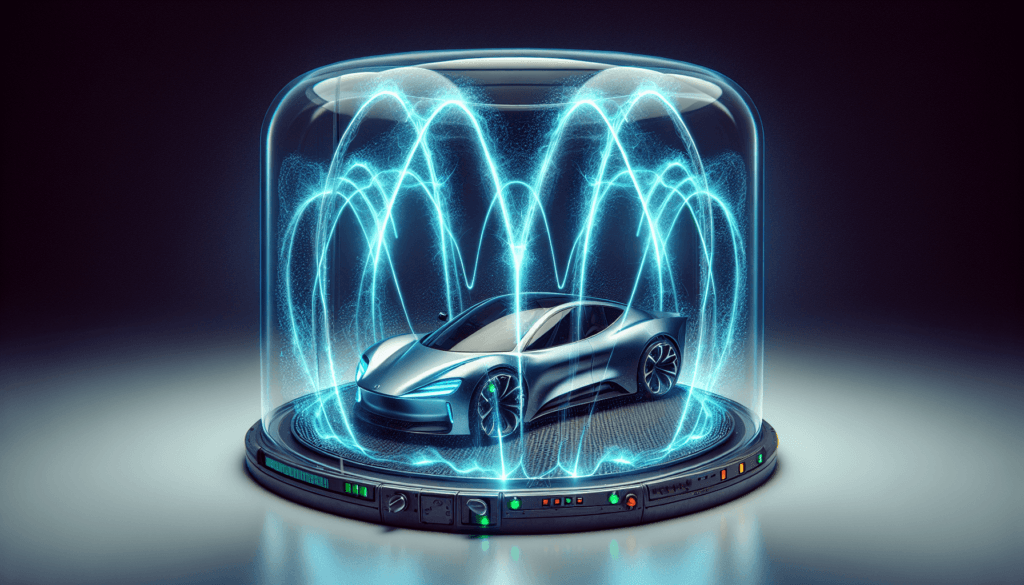Have you ever considered what could happen to your car’s electronics in the event of an electromagnetic pulse (EMP)? It might seem like something out of a sci-fi movie, but EMPs are a real phenomenon and could potentially affect modern vehicles that rely heavily on electronic systems. Whether you’re preparing for an unlikely but possible disaster scenario or just curious, understanding EMP protection for cars is key to safeguarding your vehicle.
Understanding EMPs: What Are They?
An electromagnetic pulse (EMP) is a burst of electromagnetic radiation that can result from natural or man-made causes. EMPs can disrupt or even damage electronic equipment, and with cars becoming increasingly reliant on complex electronic systems, understanding the implications of an EMP is crucial.
Natural vs. Man-Made EMPs
There are two primary sources of EMPs: natural phenomena and man-made events. Natural EMPs are typically caused by solar flares or lightning strikes, while man-made EMPs can result from nuclear detonations high above the atmosphere or non-nuclear EMP weapons designed specifically for disrupting electronics.
How EMPs Affect Electronics
When an EMP occurs, it generates a powerful burst of electromagnetic energy. This energy can induce currents and voltage surges in electrical devices, potentially destroying sensitive electronic components. The severity of the damage depends on several factors, including the strength of the EMP, the distance from the source, and the level of shielding present.
The Vulnerability of Modern Cars to EMPs
Modern vehicles are a technological marvel, but this reliance on electronics can also be a vulnerability. Understanding how and why cars are susceptible to EMPs is essential for contemplating mitigation strategies.
The Electronic Architecture of Modern Cars
Today’s vehicles are equipped with a multitude of electronic components, from infotainment systems to engine control units (ECUs). These systems are interconnected and rely on microprocessors, sensors, and complex wiring networks, making them susceptible to electromagnetic interference.
Which Parts Are Most Vulnerable?
In a vehicle, certain components are more susceptible to EMP damage than others. Key systems at risk include:
- Engine Control Units (ECUs): The brain of the car’s engine, ECUs are vital for optimal performance and regulation.
- Transmission Systems: Modern transmissions rely heavily on electronic controls for shifting and performance.
- Communication Systems: Radios, GPS, and telematics systems are vulnerable due to both their electronic nature and their antennas which can act as EMP receptors.
Mitigation Strategies for EMP Protection
Preparing your car for an EMP event doesn’t have to be overly complicated, but it does require a proactive approach. There are several strategies and products available to help protect your vehicle.
Installing Faraday Cages
A Faraday cage is an enclosure used to block electromagnetic fields. The concept is based on Faraday’s Law, which states that a conductive enclosure can shield its contents from external electric fields. Installing or placing sensitive vehicle electronics within a Faraday cage can offer protection against EMPs.
Using EMP Shielding Materials
Specialized materials can be used to shield electronics from EMPs. These materials, often made from metal meshes or conductive foils, can be applied to key areas of the vehicle’s electronic systems, providing a layer of defense against electromagnetic interference.
Grounding Techniques
Grounding components properly can mitigate some of the EMP energy that may enter electrical systems. Ensuring that your vehicle’s grounding points are properly secured and functioning can help reduce the risk of permanent damage.
Aftermarket EMP Protection Devices
Several aftermarket devices are available that claim to protect vehicles against EMPs. These devices often combine shielding and grounding principles and are designed to integrate with existing vehicle electrical systems.
Practical Steps to EMP-Proof Your Car
Taking practical steps to EMP-proof your car involves both preventative measures and plans for post-EMP scenarios. Here’s how you can lower the chances of your car being incapacitated by an EMP.
Evaluating and Upgrading Electrical Systems
Conduct a thorough evaluation of your vehicle’s electrical and electronic systems. Identify critical components and consider retrofitting them with EMP-resistant technology where possible.
Storing Critical Devices in EMP-Safe Enclosures
For temporary storage and transport, consider using EMP-safe bags or boxes to keep essential electronic devices safe, such as keys and communication devices like radios or phones.
Regular Vehicle Maintenance and Inspections
Consistent maintenance checks can ensure that your vehicle’s systems are in top condition. This will help prevent vulnerabilities that could be exacerbated by an EMP incident.
Establishing Contingency Plans
Incorporate an EMP event into your emergency preparedness plans. This includes actions to take if an EMP occurs, such as having spare parts and backup communication devices.
Case Studies: EMP Events and Vehicles
Learning from past events can provide insight into potential effects and responses to EMP incidents. While data is limited due to the rarity of EMP events, these case studies offer some guidance.
Historical Incidents
Examine historical incidents where EMP effects have been recorded, such as the Starfish Prime test in 1962, which demonstrated the potential broad-range impacts of a high-altitude nuclear EMP.
EMP Testing in Automotive Industry
Some car manufacturers and independent labs have conducted tests to examine the robustness of modern vehicles against EMPs. These tests can offer valuable insights as to which car models or systems are most resilient.
Conclusion: Balancing Risks and Preparedness
While the likelihood of experiencing a damaging EMP event might be low, the potential impacts on modern vehicles can be significant. By understanding your car’s vulnerabilities and taking steps to mitigate risks, you can enhance your preparedness and protect your investment. Whether you choose to equip your vehicle with advanced protective measures or simply create a plan to manage potential impacts, staying informed and prepared is half the battle.
